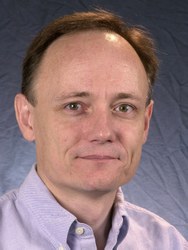PhD
Professor UNC-Chapel Hill Cancer Cell Biology
Area of interest
I. Research Interests/Cancer Relatedness
Cellular movements such as cell crawling, organelle transport, and phagocytosis play critical roles in the fundamental cell biology of cancer cells. Our goal is to understand the molecular basis of these movements, and the strategy that we are pursuing to attack this problem is to first identify and characterize the actin-based motor proteins (or myosins) hypothesized to power many cellular movements. We are particularly interested in investigating the unconventional myosins, since these motor molecules appear to underlie many basic cellular phenomena ranging from cell crawling to signal transduction.
Much of our current research centers on the characterization of myosin-X (Myo10), an unconventional myosin that is expressed in most vertebrate tissues. This novel myosin has a tail that contains three PH (Pleckstrin Homology) domains, a domain found in many signaling proteins. Since one of Myo10’s PH domains binds to PIP3, Myo10 is hypothesized to function downstream of PI(3)-kinase, an enzyme of great importance in cell signaling and cancer. Working with our collaborator Staffan Stromblad at the Karolinska Institute, we have recently found that Myo10 binds to the conserved NPXY motif of ?1, ?3, and ?5 integrins. This suggests that Myo10 may also play a role in the attachments mediated by these important cell adhesion molecules.
We have also discovered that Myo10 exhibits a striking localization to filopodia, slender extensions that appear to act as cellular fingers or sensors involved in adhesion and signaling. Most importantly, we have observed puncta of GFP-Myo10 undergoing remarkable forward and rearward movements in filopodia, leading us to hypothesize that Myo10 is a molecular motor that powers a novel form of motility we term intrafilopodial motility. Although the cargos of this new form of cellular movement are currently unknown, signaling complexes or cell surface molecules such as integrins are strong candidates to undergo Myo10-powered transport.
Myo10 also appears to be involved in regulation of filopodia since overexpression of Myo10 approximately doubles the length and number of filopodia in several different types of cells. This could be due to increased adhesion at the tips of filopodia or it could be due to a more direct effect of this motor on filopodial dynamics. The latter possibility is particularly exciting since the effectors that regulate filopodial extension are largely unknown. It will thus be important to test whether Myo10 functions upstream of downstream of signaling molecules known to be important in filopodial extension such as cdc42. In this regard, it is important to realize that although the the past few years have witnessed incredible progress in our understanding of lamellipodial extension, much less is known about the pathways underlying filopodial extension and retraction. We have also recently learned that Myo10 localizes to the phagocytic cup in macrophages and overexpression of the Myo10 tail as a dominant negative leads to leads to a profound inhibition of macrophage phagocytosis.
Awards and Honors
Our research measuring the molecular step size of brain myosin-Va (Myo5a) and demonstrating that Myo5a is a processive myosin has had a large impact on the motor protein field and has led to insights on the fundamental mechanisms of force production. We also discovered a new member of the myosin-V family, myosin-Vc (Myo5c), which appears to be the major class V myosin in many non-neuronal tissues.
Our discovery of Myo10 is of particular relevance to cancer cell biology due to the probable roles of this protein in cell adhesion, PI(3) kinase signaling, and intrafilopodial motility. This research has also led us to identify a putative filopodial tip complex and raises important questions about the structure and biology of filopodia. To identify the full set of candidate motors responsible for actin-based movements in human and several other organisms, we also performed a systematic and exhaustive genome-based analysis. In human alone we discovered evidence for the existence of 8 novel myosin genes, including 2 myosins-I and 3 conventional myosins. Importantly, one of the conventional myosins is a previously unsuspected non-muscle myosin-II, a protein that has been intensively studied by cell and cancer biologists because of its role in cytokinesis and cell motility. Our lab was recently honored by a 2002 Hettleman prize for scholarly and artistic contributions by UNC faculty.

